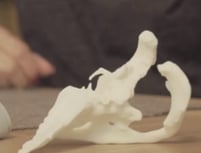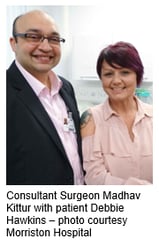November proved to be a busy month in the MedTech Industry. From a custom 3D printed shoulder implant helping a patient overcome the wounds of a shooting tragedy to the world’s first jaw reconstruction surgery using 3D printing. Here’s what you missed last month:
3D Printed Shoulder Implant Helps Patient Move Forward After Shooting Tragedy
Patient Nathalie Dufaut Danjon sustsained a serious shoulder injury and was one of few people who was willing to take an innovative route to improve her health. After consulting with 12 surgeons, it was determined that Danjon would need non-traditional treatment to help with her shoulder. The procedure using a 3D printed shoulder implant was successful and allowed Nathalie to regain mobility in her shoulder.
 FDA Recommendations For Medical Device Cybersecurity
FDA Recommendations For Medical Device Cybersecurity
The topic of cybersecurity for medical devices became a hotter issue this past year amid several high-profile hospital cybersecurity breaches, and the FDA is paying close attention. The goal of the FDA’s Center for Devices and Radiological Health is to encourage a coordinated approach of vigilance, responsiveness, resilience, and recovery that fits with a culture of continuous quality improvement. To help device manufacturers better understand its requirements the FDA has published a set of guidelines for Postmarket Management of Cybersecurity in Medical Devices to go along with its premarket guidance for medical device cybersecurity.
World’s First Use of 3D Printing May Revolutionize Reconstructive Surgery
A Welch surgical team has performed the first jaw reconstruction surgery using 3D printed titanium specifically designed for the patient, resulting in much more natural result. Surgery for oral cancer often leaves patients disfigured and unable to speak normally. Standard reconstructive surgery involves removing a part of the patient’s fibula and fitting it into the space made in the jawbone excised to remove the tumor.
CT imaging data is converted to a 3D model on a computer that the technician uses to ensure the precise geometry needed. The 3D optical laser printer then constructs the titanium implant using titanium powder fused by laser into the precise geometry micro layer by micro layer.
Stay current on the latest medical device, MedTech Industry, and 3D printing technology news by joining us on Linkedin!


